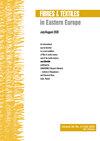利用乳清加工羊皮技术的发展
IF 0.9
4区 工程技术
Q3 MATERIALS SCIENCE, TEXTILES
引用次数: 0
摘要
摘要为了减少氯化钠的消耗,提高保鲜效果,缩短羊皮保鲜过程中的加工时间,本研究对乳清作为防腐剂,aldazan作为防腐剂的可能性进行了研究。提出的用于保存生羊皮的乳清-盐方法允许通过在防腐剂组合物中使用乳清来减少氯化钠的消耗高达50%,与传统方法相比,处理皮肤的过程持续时间缩短1.5-2倍(传统方法- 80小时,建议- 54-56小时),保存过程从8小时到4小时,干燥过程从72小时到48-50小时,保存过程的成本,以及企业废水的耗水量和污染。本文章由计算机程序翻译,如有差异,请以英文原文为准。
Development of Sheepskin Processing Technology Using Whey
Abstract In this study, the possibility of using whey as a preservative and aldazan as an antiseptic was studied in order to reduce the consumption of sodium chloride, enhance the effect of preservation, and reduce the duration of sheepskin processing during preservation. The whey-salt method proposed for preserving raw sheepskin allows to reduce the consumption of sodium chloride through the use of whey in preservative compositions by up to 50%, the duration of the process of processing skins in comparison with the traditional method by 1.5-2 times (traditional method - 80 hours, proposed - 54-56 hours), the preservation process from 8 to 4 hours, the drying process from 72 to 48-50 hours, the cost of the preservation process, as well as the water consumption and pollution of wastewater from enterprises.
求助全文
通过发布文献求助,成功后即可免费获取论文全文。
去求助
来源期刊

Fibres & Textiles in Eastern Europe
工程技术-材料科学:纺织
CiteScore
1.60
自引率
11.10%
发文量
12
审稿时长
13.5 months
期刊介绍:
FIBRES & TEXTILES in Eastern Europe is a peer reviewed bimonthly scientific journal devoted to current problems of fibre, textile and fibrous products’ science as well as general economic problems of textile industry worldwide. The content of the journal is available online as free open access.
FIBRES & TEXTILES in Eastern Europe constitutes a forum for the exchange of information and the establishment of mutual contact for cooperation between scientific centres, as well as between science and industry.
 求助内容:
求助内容: 应助结果提醒方式:
应助结果提醒方式:


